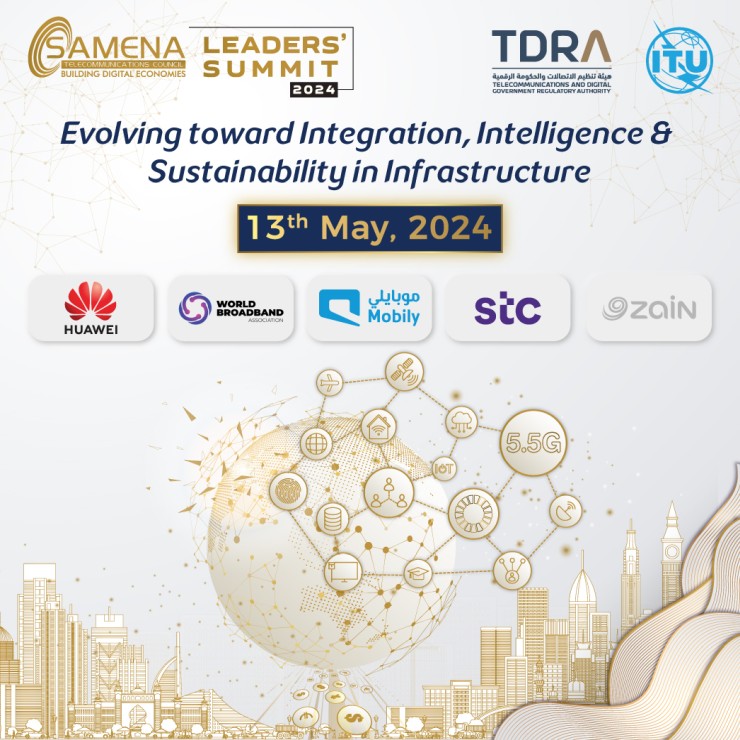The Huawei User Group Meeting 2021 kicked off with a keynote speech, "Digital Innovation: Fueling the New Digital Economy", delivered by Ryan Ding, Huawei Executive Director and President of the Carrier Business Group.
"ICT infrastructure underpins the digital economy, and digital resilience is becoming a core competency of companies seeking to adapt to the changing environment," said Ding. "Companies must go digital and intelligent if they want to become more resilient."
According to Ding, there are six key factors to digital and intelligent transformation:
- Platform and data-based digitalization
- Intelligence enabled by autonomous networks
- Agility needed for in-house development
- Organization and process-based collaboration
- Efficient network O&M and service provisioning
- Energy efficiency and green development.
Complementary to this, Huawei has focused on innovating in four digital areas – network, technology, services, and talent – with the purpose of enabling ICT companies to go digital and intelligent, empower industries, drive new economic forms, and ultimately fuel the new digital economy.
As 5G will drive a 10-fold increase in the number of connections and new technologies like virtualization and cloudification are evolving, energy consumption is also increasing. Telecom operators excel at providing network connectivity – the foundation of ICT infrastructure. But to build new networks that are reliable and energy efficient, and offer the best possible experience, operators need to innovate in their end-to-end digital networks, including wireless networks, core networks, and data centers.
To help operators achieve this goal, Huawei has developed 64T64R AAUs that contain proprietary multi-antenna algorithms, which help operators improve network experience and performance. The company's rock-solid solution, with improved software architecture and algorithms, ensures the reliability of cloud-based core networks. Additionally, by employing innovative technologies such as energy efficiency simulation and intelligent power usage effectiveness (PUE) optimization, Huawei is helping data centers maximize their energy efficiency.
Broadband has become essential to our everyday work and lives, and users are demanding a better experience, beyond just connectivity. The traditional people-centric approach, in which operators respond only when users report a fault, can no longer meet service requirements. Digital technologies are urgently needed to make O&M more efficient.
In China, for example, 5G networks have been up and running for two years, but only 9.7% of data traffic is offloaded to 5G. This falls far short of the target of 30%. To address this issue, the sales and network departments of local operators have raised higher network optimization requirements for factors like 5G device penetration rate, 5G service switch-on rate, 5G DOU (average monthly Internet traffic per user), 5G coverage, and 5G camping duration.
Huawei has creatively applied its digital technologies to complex network planning, construction, maintenance, and optimization, enabling operators' O&M to go digital and intelligent faster. For example, 360-degree site surveys and intelligent acceptance checks can make digital and remote work a reality. With intelligent forecasts, one-click intelligent diagnoses, and proactive care programs, the O&M process will become digital and intelligent faster. Converged OSS and BSS data, together with digital network optimization capabilities that have opened up to operators, allows them to provide better coverage for blind spots and conduct precision marketing. Operators will then see their network and sales departments better collaborate, and rapid increases in the ratio of users that have got a 5G device, have access to a 5G network, and also subscribe to a 5G plan. This will ultimately ensure more data traffic is offloaded to 5G.
As 5G networks are commercially deployed on a larger scale, we are seeing more new digital services, including new 5G voice services, 5G messaging, and 5GtoB. In 5GtoB, 5G supports flexible data collection, fast transmission, and timely computing, enabling companies to connect the different segments of production and acquire production data faster. This has helped create a data foundation that supports the digital and intelligent transformation of the manufacturing industry. In a hot, dusty steel mill, for example, streaming live footage allows for remote control capabilities, but only with 5G is it possible to remotely control multiple cranes simultaneously. This can improve the working environment and work safety for crane drivers, while also boosting productivity.
Digital talent is the foundation for digital and intelligent innovation. With more than 1,300 expert trainers, 31 training centers, and experience in working with 260 operators, Huawei Training Academy provides skills consulting, delivery, and certification services to reskill employees.
At the end of his speech, Ding stressed that Huawei has implemented over 100 benchmark projects in the manufacturing industry alone, driving the digital and intelligent transformation of various other industries. While addressing issues found in real-world scenarios, digital innovation should also create social value and contribute to economic development. Innovation isn't just about today; it's about lighting up the future.
Since the first Huawei User Group Meeting 13 years ago, an Advisory Board composed of 12 representatives from Huawei's customer base has worked with over 440 customer volunteers to actively offer leading industry insights which formulate suggestions for Huawei's operations. Then, in collaboration with Huawei's project teams, the Board participates in improvement projects to address the identified top issues. To date, more than 60 such projects have been implemented to continually improve the quality of Huawei's products, services, and solutions, and create greater value for our customers.
The Huawei User Group Meeting 2021 ran from July 13 to 14, 2021 and is organized around the themes, "Listening | Cooperation | Improvement | Development". It is a platform for customers, Huawei experts and partners from around the world to exchange and share ideas. please visit: www.huawei.com/minisite/hugm2021/en/
Source: https://www.huawei.com/en/news/2021/7/digital-innovation-new-digital-economy
